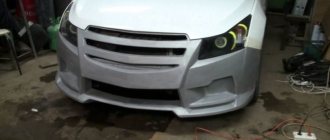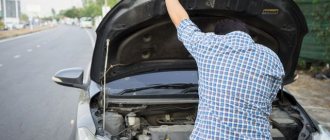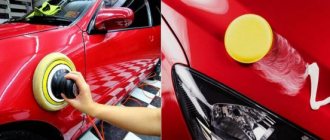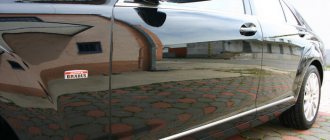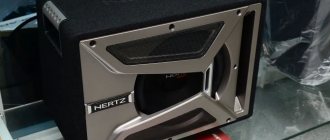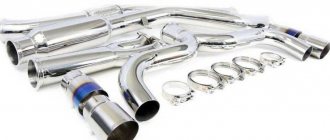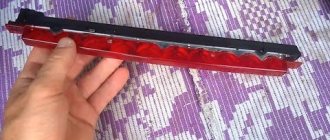During the operation of a car, microscopic scratches inevitably form on the paintwork. The reason for this may be various factors - improper washing, branches of bushes, small pebbles flying from under the wheels of vehicles passing by, etc.
To maintain the usual shine, the car is polished. Today, among auto chemical goods you can find many products that allow you to eliminate minor scuffs or restore the freshness of the paint. Among them is an originally Japanese development called “liquid glass” (sometimes autoceramics).
Let's consider what this liquid is, what effect it has on the car body, and how to work with it correctly. Let us also pay attention to the advantages and disadvantages of the product.
Surface preparation and coating of a car with liquid glass
The process of applying liquid glass is multi-stage and quite complicated, so not every car enthusiast will be able to do it with his own hands. At the end of this article, see detailed video instructions and a review of this protective coating.
First of all, preliminary preparation of the surface of the body and optics is necessary - the bright shine of the paintwork and dim headlights are unlikely to go well together. Therefore, the first stage before applying the coating is to thoroughly wash and dry the body.
Work with liquid glass is carried out indoors with certain requirements for dust content in the air and illumination of the workplace. Paint booths are best suited for this purpose.
In addition to the requirements for the premises, there are also requirements for special tools (polishing machines, installations for drying parts) and the qualifications of the performers - which is why independent coating with liquid glass is possible only if you have certain skills and working conditions.
The next stages of coating are degreasing and primary polishing of body surfaces, optics and glass. For used cars, this stage can take considerable time: to eliminate deep defects in the paintwork, polishing using abrasive materials may be required, which is not always acceptable for the specific condition of the varnish in a particular place.
If after initial polishing defects still remain (we are talking about chips, deep scratches), additional work is carried out to eliminate them.
The next stage is finishing (“mirror”) polishing - it is its results that should preserve liquid glass for the maximum possible time.
Layer-by-layer application of liquid glass is the main stage of work.
There can be up to 10-12 layers (it is clear that if the technology is followed, then the more the better), but at least 4: preliminary, two main and final.
The final stage of applying nanoceramics is drying the coating (sintering of the composition, as it were). This process also takes quite a long time and can take up to 12-15 hours.
Features of coating a machine with liquid glass with your own hands
When applying the coating yourself, taking into account the above requirements, you should adhere to the following recommendations:
- if it is not possible to carry out treatment indoors, then it is necessary to use at least a canopy (in case weather conditions change). It is advisable to carry out work at an ambient temperature of 15 ° C to 40 ° C in the absence of increased dust content;
- degreasing should be carried out with white spirit with mandatory cleaning of the surface from old coatings;
- The machine should be polished at medium speed in limited areas to ensure that the polishing quality is satisfactory. In the absence of a polishing machine, this can be done manually, but the process will take a long time (high-quality manual polishing of an average car takes at least 5 hours);
After completing the work, it is not recommended to wash the car for another two weeks until the final formation of the coating. But after this period, the car will only need a weekly rinse to give it a bright shine.
Manufacturers and cost
Liquid glass for cars is produced by many manufacturers.
Of course, such a promising market as liquid glass for car bodies is attractive to a large number of manufacturers. Among them are representatives of different countries and price categories: V-MAFA (China), KillAqua (Russia), GYEON and CQuartz (South Korea), Nanoskin (USA) and Willson (Japan). Also, when listing brands of polishes and liquid glass for cars, it is certainly worth remembering Everglass - a professional-grade ceramic coating, unfortunately, available for application only in auto centers. When choosing liquid glass for a car, which one is better is a controversial issue. Here you should take into account the ratio of cost, duration of action, resistance to detergents, ease of application, layer strength and water-repellent properties. So, each brand has its own characteristics. For example, liquid glass for cars Willson glass guard , which is based on silicon dioxide, when applied to the body, can provide protection for at least a year, with an average price of $60. By the way, this line has separate products for dark and light cars, which allows you to restore the brightness of the original body color as much as possible.
Liquid glass is produced by many manufacturers of protective chemicals for cars. You can always find something suitable
The Korean brand CQuartz also uses silicon dioxide and can withstand up to fifty washes. The price range starts from $50, but the main advantage of this product is the adaptation of the product to our climatic conditions. Its sister brand, GYEON, lasts for eighty washes. At the same time, when assessing the antistatic properties of this liquid glass for cars, reviews from owners indicate that the intervals between washes are significantly increased. In turn, the domestic KillAqua offers protection from six months to three years, with an average cost of $80.
But there are very controversial reviews regarding this brand. So, for some, the price for real quality is too high, while others do not notice a positive effect at all.
How to choose liquid glass for a car?
Before describing the specifics of solving the problem of how to coat a car with liquid glass, it is worth paying attention to the rules for choosing the composition. You need to start by considering the types and categories of composition present on the market that are used as the basis for the production of liquid glass. Here are the three most basic ones.
- potassium, that is, made on the basis of potassium. It is characterized by some friability and increased hygroscopicity;
- sodium – characterized by ideal fire retardant qualities;
- lithium is a relatively uncommon coating option, which is produced in small quantities and is used as a coating thermostat.
All of these are mono-alkaline formulations, but there are also complex and combined options. Answering the question - which glass is best suited for a car, it can be noted that any coating can be used. Whatever liquid glass coating option is chosen, the benefits from its application will in any case be an order of magnitude greater.
The most important thing in the process of choosing the optimal composition is to take into account the manufacturer’s recommendations regarding the complexity of application.
Experts strongly do not recommend purchasing a composition for self-application that was originally intended for use in a professional environment. The reason is that applying such a composition and following all the technology will be quite difficult.
Cover price
The cost of the composition has a strong influence on how much it costs to coat a car with liquid glass. Polish can cost about 2-3 thousand rubles for 1 bottle with a capacity of 0.3-0.5 liters (the cheapest option). The cost of preparing the body should be added to the amount.
If you use the services of a service station, you will have to pay about 5,000 - 10,000 rubles. The price of polish purchased at service stations is likely to be overpriced. The painters themselves justify the cost by the durability of the coating and the best technical properties. By applying it manually, you can polish your car and invest 1,000 rubles (at minimal expense and without special preparation). The difference between the quality of car processing in specialized automotive centers and a garage is practically the same.
Liquid glass Ceramic PRO 9H
The amount of body treatment depends on the type of car:
- polishing a sedan will require about 70 ml;
- if you process an SUV - 110 ml;
- To cover a large jeep you need 140 ml.
There are other materials and tools that will be useful in the process:
- specialized shampoo – price up to 1,000 rubles. The coating is sensitive to the quality of body treatment before application. It is recommended to thoroughly clean the body during the preparation stage. During the washing process, stains of bitumen, grease and other contaminants of organic and synthetic nature are removed;
- body cleaner - price about 1100–1300 thousand rubles. Helps remove dirt embedded in the smallest pores;
- degreaser costs from 200 to 500 rubles. The product removes any fats. For application, you should buy a rag or microfiber cloth.
For used cars, the instructions recommend pre-polishing to remove scratches. The price of the procedure differs depending on the area and depth of the damage. Liquid glass, like a lens, will make any damage more visible if you treat an unprepared body. The price of work is from 3,000 rubles.
In total, all work will cost about 6-7 thousand rubles, subject to minimal costs and the procedure being performed manually. If you use the services of masters, the price will double.
What is liquid glass
Liquid glass for cars is a coating and at the same time a polishing agent, first produced in Japan. At the moment, protecting the body with liquid glass is the most productive way to protect the car from the effects of dirt, dust, and ultraviolet radiation. The composition of the glass is two-component, which not only protects the car from microcracks, but also gives it incredible shine, and with several layers - a mirror effect. Immediately after painting the car, this polish works as an effect fixer.
We recommend: Reasons and process for replacing a Ford Focus fuel pump
When liquid glass gets on a car's paintwork, it forms a hard film, which causes water and dirt to roll off the surface. This is achieved thanks to a silicon base that is water-repellent.
Nanoceramics cannot be used to repair auto glass. This type of coating does not apply to those used for repairs. Many manufacturers indicate that their composition cannot be applied to plastic, chrome parts and glass. Products from some companies can be used on glass, but not to cover cracks, but as protection.
Preparation for application
It is important to prepare glass and plastic elements (protect them from liquids). Initially, the old polish is removed if the car was previously coated with it. It is important to create maximum adhesion of the paintwork with the polish; there should be no intermediate layers between them. After cleaning and degreasing, the car is left to dry.
Car degreasing process
Advantages and disadvantages
After polishing, the car takes on the appearance of a shiny new car that has just rolled off the assembly line. This polishing effect can be achieved thanks to the numerous advantages of the substance. These include:
- the low cost of the product is one of its main advantages;
- resistance to heat and ultraviolet radiation - even if the car is left in the open sun for a long time, the coating will not lose its properties;
- transparency of the material - due to which the shine and color of the car is given;
- the hardness of the product after hardening - protects the car from external influences;
- ease of application - the polish is easily and quickly applied to the surface of the car;
- long service life - the coating will last at least one year, even under unfavorable operating conditions, if the application technique has been followed.
Liquid glass, like any product, has not only advantages, but also a number of disadvantages. Among them:
- low ductility - the protective coating can crack if accidentally hit;
- instability to low temperatures - the substance loses its properties in the cold.
After applying the coating, a car polished with liquid glass can only be washed with water.
Washing the car using special chemicals can damage the applied coating.
Also, when washing, do not rub the surface of the car with brushes and rough rags.
Excursion to the manufacturers
In the modern car cosmetics market there is a wide variety of polishes, which are called liquid glass. Among them there are products worthy of attention, but you can often find counterfeits. Although such options are also liquid glass, the lack of experience in production affects the quality of the product, so it is better to opt for those companies that have proven themselves to be quality products.
The following brands occupy leading positions among manufacturers specializing in the production of high-quality liquid glass for cars.
Wilson Silane
The first on the list is the Japanese manufacturer, since chemists from this country were the first to develop this body polishing product, and therefore have more experience than other brands. Wilson Silane products are more common on the car cosmetics market.
To distinguish the original from a fake, you should pay attention to:
- Price. The original will cost more than analogues from other manufacturers. The price can be compared with the information on the company's website. If a store sells a product at a “hot” price, then most likely it is a fake. An exception may be a sale related to the liquidation of a store. In this case, the cost of all product categories will be reduced.
- Packaging. The box with original products always has the company's label printed in several places (Wilson in red letters on a white background). The product name must contain the word “Guard”.
- Complete set. In addition to the bottle of liquid, the package should contain microfiber, a sponge, a glove and an instruction manual (in Japanese).
Bullsone
The South Korean company sells products of no less quality than the previous manufacturer. The bottle is equipped with a sprayer, which facilitates the process of applying liquid to the body.
The product can be applied in several layers at intervals of a month. This creates a thicker film. The protective layer prevents the base layer of paint from fading. The product is sold in containers of 300 lm.
Mothers
The products of this American company are no less popular than their Japanese counterpart. The product catalog contains a wide variety of products for cosmetic car care.
Using different categories of polishing materials may give better results. For example, you can first apply Micro-Polishing Glaze (also called glaze), and then Pure Brazilian Carnauba Wax (wax polish). Some users even note a change in the color of the car.
Sonax
Another well-known brand specializing in the production of all kinds of car care products. The product of the German manufacturer, just like the previous ones, is not cheap.
Compared to wax polishes, this solution lasts longer on the surface, however, according to some customers, it masks scratches worse (than more expensive analogues). In view of this, before applying the product, it is necessary to polish the scratched areas using abrasive pastes. How this procedure is performed is described here.
Most often they try to counterfeit Wilson Silane products, since they cost an order of magnitude more than similar products. It is much less common to find a fake from a German or American manufacturer.
HKC Ceramic Coating
The product of the Estonian manufacturer belongs to the category of materials for professional use. Ceramic Coating liquid is well distributed over the surface. According to the manufacturer, 50 milliliters is enough for two treatments.
The film does not lose its strength up to 80 washes. Some owners of cars with metallic paint shades especially liked the product. The car began to look original thanks to the creation of a prism effect.
Soft99 Glass Coating H-7
The product of the Japanese manufacturer has a one-component composition. Thanks to this, it can be stored for a long time. Suitable for processing plastic, paintwork, metal and chrome parts.
When applying, avoid contact of the product with rubber products. The components included in its composition can damage them. To polish a medium-sized car, 50 ml should be enough. solution, although the instructions indicate the number 30.
Ceramic Pro 9H
This product belongs to the “Premium” category. It is considered one of the most expensive polishes. It is practically impossible to find it in stores, since due to its high cost and complexity of work it is used only in professional studios.
Experts do not recommend using this product if you do not have experience in treating the body with liquid glass. If the technician deviates even slightly from the manufacturer's instructions, he may damage the paintwork.
The effect of this product is a durable film for up to 100 washes. True, 50ml. (this is the volume the product is sold in) is enough for only one treatment, and then in three layers. Periodically (at least 9 months) the top ball must be refreshed so that the coating does not lose its properties.
Liquid glass for a car - what is it and what is it for?
The body is the most visible and expensive part of the car, so means of caring for it and protecting it from adverse influences are always in demand. For a long time, protective polishing with wax-based materials was used for the body, but the development of technology has opened up the possibility of using compositions based on silicon compounds.
Actually, the basis of what is usually called glass or ceramics is ordinary sand. More precisely, not the sand itself, of course, but silicates - salt compounds of silicon.
Alkaline solutions of sodium or potassium silicates have long been well known and are used in construction (waterproofing) and in everyday life (office glue). By the way, sometimes liquid glass is also produced like regular glass: by sintering sand and, for example, ordinary soda at high temperature.
The main ingredients of the coating are the following:
- Additions of titanium and aluminum oxides using a certain technology to a material containing silicon dioxide (sand),
- Silicone based liquid,
- Surfactants (surfactants),
- Chemical compositions used in the production of polymer films.
Titanium oxide creates a thin film for thermal protection of the material at the level of nanoparticles, so modern liquid glass is rightfully classified as nanoceramics. It is this substance that gives the coating a glossy shine.
Surfactants are used as an ingredient found in detergents. Surfactants are needed to “repel” dirt particles remaining on the prepared surface of the body, which can interfere with the coating formation process.
The silicone base serves to prevent oxidative processes and improve adhesion (“adhesion”) of the coating to the body surface.
The remaining components can be used in different proportions, but the “sand” base of liquid glass, which improves the strength characteristics of the coating, remains unchanged.
What does liquid glass do for a car’s paintwork, besides adding shine?
First of all, it is a harder surface than conventional car varnishes.
Hardness, by the way, is determined in the same way as for graphite pencils and has the index “H”.
However, it should be remembered that the hardness of the coating will largely depend on the preparation of the surface to be protected:
- for new cars coated with “hard” production varnishes, the final (after application) hardness of the coating will be maximum;
- for repainted surfaces, the hardness of the applied coating will be lower than for coatings of new cars due to the fact that repair varnishes are usually “soft”;
- Ensuring uniform hardness for cars with significant mileage is generally problematic, since in addition to painted (and possibly at different times) body parts, various (even abrasive) preliminary preparation of these parts may be required.
Liquid glass creates a coating that is more capable than car varnish of preventing the appearance of chips, scratches, and small dents, not only due to increased hardness, but also due to a certain plasticity. And, of course, such a coating is additional protection from an aggressive environment.
Often in advertising materials dedicated to liquid glass you can find a statement that the use of the coating improves the saturation of the body color and makes it deeper and brighter. Of course, this kind of statement is nothing more than a myth.
Even if the transparency of the coating were ideal (100% light transmission!, which in fact does not happen), the brightness and saturation of the original color could, at best, be preserved. Another thing is that the coating components significantly reduce the harmful effects of ultraviolet radiation on the paint, preserving the “native” color for as long as possible.
After properly applying the coating to the car and after long trips, it is enough to rinse the car with clean water without using detergents - the shiny surface of the body is instantly restored.
Among the disadvantages of coating with liquid glass, the only thing worth noting is the high final (materials plus labor) cost of the process. At the same time, the labor intensity of the process of preliminary surface preparation, especially for used cars, is indeed quite high.
How long does liquid glass coating on a car last?
The world's leading manufacturers declare the durability of the coating while maintaining its basic properties for two to three years. According to reviews from Russian motorists, the average durability of such coating on Russian roads is 1 year.
How to apply liquid glass to a car
Coating a car with liquid glass
In most cases, you can apply liquid glass for cars yourself. The only difficulty of the technology lies in the correct preliminary preparation of surfaces. Choose a place to work with a normal temperature, so that the possibility of dust, sunlight and, especially, precipitation getting on the body is minimal.
Recommended: Reasons for replacing the valve cover gasket
First, thoroughly wash and dry the car, and if necessary, treat it with a universal degreaser. This is very important to do - the liquid glass on the car must be in perfect contact with the main surface. You need to work one by one with individual areas of about 0.5 square meters. It is most convenient to start from the roof.
The liquid must be applied to the sponge included in the kit. Then use a sponge to gently scrub the surface area. Depending on the brand chosen, after applying the product, you must wait a certain period of time (indicated in the instructions), and then perform a small polishing with a rag, also included in the kit.
After treating the entire car, you should avoid touching the body for several hours.
During the first 24 hours, you should absolutely not wash the car, and it is better to leave it in the garage altogether. Complete hardening of the layer occurs within 15-20 days, and during this period it is better not to wash the car in a car wash, but only rinse it with clean water. Go to the official website of the supplier
How to prepare your car for polishing
The car must be polished in a clean room, without drafts and high humidity. For example, in a car wash bay. The car must be washed thoroughly and then the old polish must be removed.
This can be done using a soft attachment on an angle grinder (use a tool with adjustable speed and soft start) and an abrasive polishing paste. While polishing, constantly move the grinder with the attachment over the body part being processed. Avoid strong pressure and do not hold the tool in one place, so as not to overheat the paintwork and sand it down to metal. If this operation is performed correctly, all minor scratches will disappear from the paintwork. After finishing the treatment, you need to wash the car again, then wait for the body to dry and begin degreasing. Do not use gasoline or thinner for degreasing; they are less effective and often damage the paintwork of the body. Only use an adhesion activator that matches the polish from the same manufacturer.
The process of coating a car body with liquid glass
In order for the process of applying liquid glass to a car body to be enjoyable and, most importantly, to ensure a long-lasting result, it is necessary to follow a certain sequence of actions. Here are some basic stages of applying liquid glass to a vehicle.
Required materials and tools
Before you start work, you need to prepare the necessary materials and tools. The following tools should be included with a standard polish.
- Basic composition.
- Hardener.
- Mixing pipette.
- Fiber for manual polishing.
- Towels.
- Sponges.
- Gloves.
If any of the above is missing from the composition, it must be purchased in addition.
Preparing the car body
It is imperative to prepare the surface of the car. This is one of the important stages in the polishing process and should not be skipped! Preparation consists of the sequence of the following actions.
- The vehicle is thoroughly washed and all dirt is removed.
- The surface is degreased using white spirit, previously diluted in water.
- The car is given time to dry.
It is strictly forbidden to use mixtures containing silicone or low-quality alcohol for degreasing.
Another important rule is to remove the previous polish. Neglecting this advice will result in the new layer of liquid glass remaining on the surface much less than the period guaranteed by the manufacturer.
It is equally important in the preparation process to select a site for work. Preference should be given to a dry, ideally ventilated place, where the temperature ranges from 15 to 40 °C above zero. The best option would be to perform polishing in the garage, or outside, but always under a special canopy.
When applying the composition, the body should not be exposed to sunlight, dirt and dust.
Coating a car body
Once the preparatory work is completed, you can begin the process of polishing the car. If you don’t have experience, you don’t need to immediately apply the entire composition to the entire surface of the body; it is advisable to practice a little on a small area. If, after testing, the polish adheres well to the surface, if the desired result is achieved, then you can begin the work process.
Liquid glass is applied gradually; it is important to carefully process area by area. Many professionals advise starting with the bumper or the right fender. After finishing processing one part, you can move on to the next step, rubbing the surface with a soft cloth, which is usually included in the kit. This approach will allow you to perform the work more efficiently, as well as avoid drying of the applied coating, which is convenient if it is necessary to correct certain defects.
Once the entire body of the vehicle has been processed, you need to leave the car alone for 4 - 6 hours. Only after this can you begin to move the car, but without visiting car washes, since the final setting of the composition occurs after about 14 days. Only after two weeks the vehicle body is completely protected from ultraviolet radiation, mechanical influences and other unpleasant factors.
Options for accelerating polishing
On average, covering a car with liquid glass takes about 5 - 6 hours, and if this is the first time, then even longer. This is a rather labor-intensive process that not everyone can handle. As you gain experience, the task can be simplified by using a special grinding machine. You will need to purchase this equipment, select a special soft pad for polishing and set the device to a medium speed mode.
We also recommend reading our specialist’s article, which talks about polishing a car with your own hands.
We advise you to additionally read our expert’s article, in which he talks about how to choose the right polishing machine for your car.
Professional opinion! During the processing process, you do not need to press hard on the grinding device. This will avoid completely unnecessary overheating of the surface.
If there is no opportunity or desire to get a professional grinding machine at your disposal, an elementary electric drill, which is at the disposal of every man, is suitable as an optimal alternative. The main thing is just to choose an attachment for it to firmly fix the polishing wheels.
If everything is done correctly, you can enjoy the body of your car throughout the year. It will need to be updated approximately once a year. Once the coating has completely set, you can visit a car wash or clean the vehicle with a bottle of water and a clean rag.
On which cars can modern material be used?
Basically, liquid glass is applied to new and short-used cars. It is possible to use this polish on old cars if there are no deep scratches, saffron marks or other severe damage to the paintwork.
If they are present, it is recommended to carry out preliminary preparation of the body for applying the polishing mixture, which consists of eliminating deep damage.
Types of liquid glass
Liquid glass coating for cars has the following types:
- Potassium - based on potassium, has a significant difference due to its friability and the property of increased hygroscopicity.
- Sodium - based on sodium, has excellent fire retardant properties.
- Lithium is the rarest liquid glass today, produced in small quantities, used as a temperature regulator for coating.
Liquid glass is also divided into:
- self-hardening;
- requiring a fixer.
results
Now you know how to properly treat your car with a protective agent. And it doesn’t matter whether you prepare it yourself or buy it ready-made - the main thing is not to violate the application technology .
And remember: you can wash your car after treatment no earlier than two weeks later.
And then your car will not only shine like new, but will also be protected from dirt, dust and minor damage for a long time. The polishing and preparation processes can be seen in the video.

